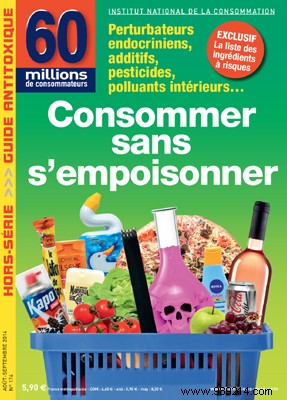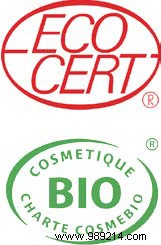
With the summer, it is the boom of the purchases of sunscreens. Are you wondering about the most protective, the best for your skin, etc.? Be careful to look carefully at what they contain. And it's not just for your sunscreen; Whether it's sun creams, moisturizers, shower gels, shampoos, dyes, deodorants, make-up removers or make-up, the vast majority of cosmetics contain harmful compounds that you have to know how to decipher.
It's like reading a menu at a restaurant:it happens that the title of the dish sets our taste buds in turmoil just by reading it, but that the gourmet result is not necessarily up to par. For cosmetics, it's a bit the same, manufacturers very often put forward products that evoke sweetness, such as oat milk, argan oil, flower honey, vanilla milk, so that the product contains substances which can harm health and the environment in the more or less long term. What are they?
- parabens are less and less present since in 2005, the CSSC (European Scientific Committee for Consumer Safety) pointed the finger at them:fortunately because these endocrine disruptors are proving to be even more dangerous over the course of scientific studies. Some will even be banned from July 30, 2015.
- methylisothiazolinone (MIT) causes eczema-like allergies and butylated hydroxytoluene (BHT) is an endocrine disruptor, but both are permitted.
- phthalates authorized as DEP (diethyl phthalate), which are however also endocrine disruptors.
- sodium laureth sulfate (SLS) which is an irritating surfactant for sensitive skin, is too often overdosed. It is better to prefer coco betaine or coco glucoside.
- phenoloxyethanol is dangerous for children because the transcutaneous passage is important and harmful for the liver, in particular.
- aluminum trichloride or chlorohydrate deodorants should be avoided because carcinogenic (breast cancer whose glands are close). Not to be confused with natural alum stone (potassium alum) which seems safe.
- heavy metals are present in some lipsticks, while they are carcinogenic and toxic to the nervous system. In addition, they cross the placental barrier easily.
- ammonia , diaminobenzenes , resorcinol , contained in hair dyes are dangerous (breathing difficulties, allergies, endocrine disruptor...)
- chemical filters of the benzophenone family contained in sun creams are proven endocrine disruptors. And nanomaterials which sometimes replace them are not yet evaluated...
And not everything is on the labels, in particular, the molecules formed during the manufacturing process as well as the fragrant synthetic compounds which are very allergenic and not controlled by health institutions.

One thing is certain, it is that cosmetics bearing the organic label (Cosmebio approved by Ecocert) contain virtually no toxic substances or synthetic substances:a minimum proportion of plants and ingredients from organic farming is guaranteed.
The 60 Million consumers special issue, released on July 10, 2014 (€5.90), dedicated to the subject "Consuming without poisoning yourself - Endocrine disruptors, additives, pesticides, indoor pollutants..." explains all this in great detail. It's a real instruction manual for choosing cosmetics for the whole family with discernment. the most harmless products?
As for sunscreen products, in the end, common sense should prevail:rather than spreading yourself with more or less harmful products - especially with regard to children - it would be better to observe basic behaviors such as exposing yourself to the sun gradually and going out at the beach only after 4 p.m. with, if necessary, a hat and a T-shirt... It will cost you less, too!